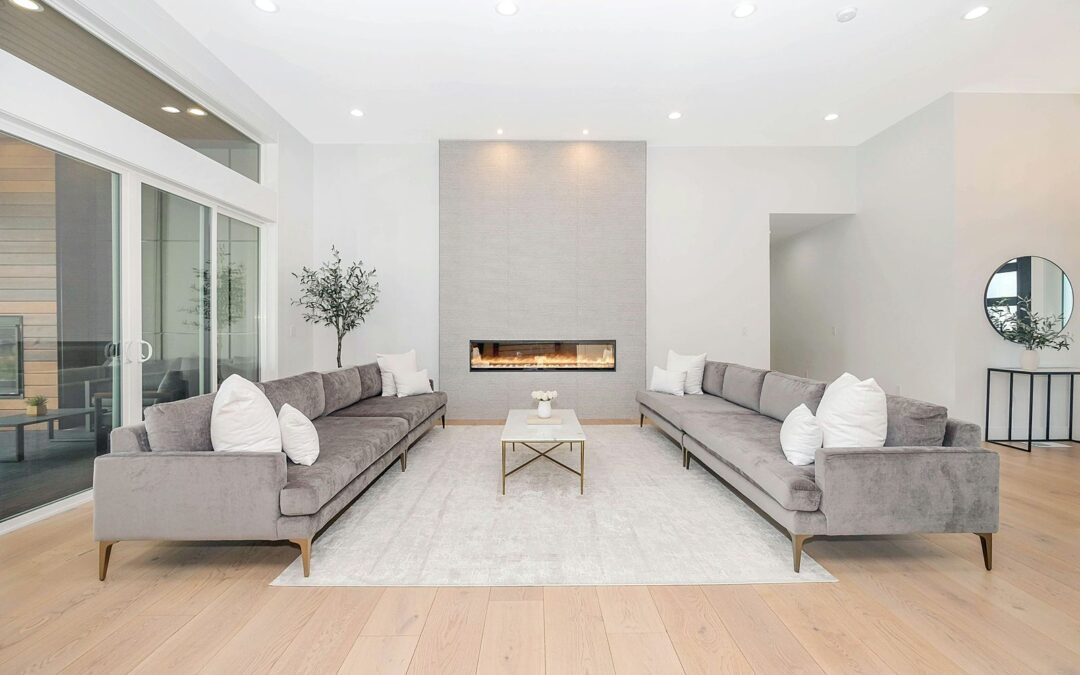When it comes to interior design, lighting plays a pivotal role in setting the mood, enhancing functionality, and showcasing the beauty of a space. From natural light to artificial lighting fixtures, the way a room is illuminated can significantly impact its overall design scheme. In this blog post, we will delve into the importance of lighting in interior design. We will explore how lighting choices can transform a space, highlight key design elements, and create an ambiance that caters to both aesthetic appeal and practicality.
Setting the Mood with Lighting
Lighting has the remarkable ability to create various moods within a space. By using different lighting techniques, such as ambient, task, and accent lighting, designers can evoke specific emotions and enhance the atmosphere. Soft and warm lighting, for example, can create a cozy and intimate ambiance in a living room or bedroom, while bright and cool lighting can establish a vibrant and energetic atmosphere in commercial spaces like retail stores or offices. The strategic placement of lighting fixtures, combined with the right intensity and color temperature, allows designers to sculpt the mood of a room and influence how people feel within that space.
Enhancing Functionality and Practicality
Beyond aesthetics, lighting also plays a vital role in enhancing the functionality and practicality of a design scheme. Properly illuminated task areas, such as kitchen countertops or office workstations, ensure optimal visibility and support efficient completion of tasks. In areas where safety is paramount, such as staircases or hallways, appropriately placed lighting fixtures provide necessary illumination and prevent accidents. Moreover, lighting can be used to highlight architectural features, artwork, or focal points in a room, adding depth and visual interest to the design. By carefully considering the purpose and function of each space, designers can integrate lighting solutions that enhance both the beauty and practicality of the design scheme.
Utilizing Natural Light as a Design Element
Natural light is a valuable asset that can greatly influence the design of a space. Incorporating windows, skylights, or other openings that allow ample natural light to enter a room can create a sense of openness and connection with the outdoors. It also helps reduce energy consumption during the day by relying less on artificial lighting. Designers can maximize the benefits of natural light by strategically placing mirrors or reflective surfaces to bounce light deeper into the space. They can also consider window treatments that allow for adjustable levels of natural light control, offering flexibility in creating different moods throughout the day. By harnessing the power of natural light, designers can create spaces that are visually appealing, energy-efficient, and conducive to occupants’ well-being.
Making a Statement with Lighting Fixtures
Lighting fixtures are not just functional elements; they are artistic statements that contribute to the overall design scheme. From chandeliers and pendant lights to wall sconces and floor lamps, the choice of lighting fixtures can reflect a particular design style, add a touch of elegance, or create a focal point in a room. Designers can select fixtures that complement the existing décor, provide a visual contrast, or serve as a conversation piece. Moreover, advancements in lighting technology have opened up new possibilities, such as smart lighting systems that offer customizable lighting options and energy efficiency. By selecting lighting fixtures thoughtfully, designers can elevate the design scheme and leave a lasting impression on occupants and visitors alike.
Conclusion:
Lighting is an essential component of interior design, influencing the mood, functionality, and aesthetic appeal of a space. By understanding the impact of lighting choices, designers can transform ordinary rooms into extraordinary environments. The strategic placement of lighting fixtures, utilization of natural light, and careful consideration of lighting techniques all contribute to creating a design scheme that is both visually captivating and practical. Whether it’s setting the mood, enhancing functionality, or making a statement, lighting is a powerful tool that designers can wield to bring their vision to life. So, let there be light, and let it illuminate the beauty of your design.
FAQs:
Q1: How does lighting affect the mood of a space?
Ans: Lighting can greatly impact the mood of a space. By using different lighting techniques and adjusting intensity and color temperature, designers can create a cozy, intimate atmosphere with soft and warm lighting or a vibrant and energetic ambiance with bright and cool lighting.
Q2: Can lighting enhance the functionality of a room?
Ans: Yes, lighting plays a crucial role in enhancing the functionality of a space. Properly illuminated task areas, such as kitchen countertops or office workstations, ensure optimal visibility and support efficient completion of tasks. Well-placed lighting fixtures in areas like staircases or hallways provide necessary illumination for safety purposes.
Q3: How can natural light be utilized in interior design?
Ans: Natural light can be harnessed as a design element by incorporating windows, skylights, or other openings that allow ample natural light to enter a room. Designers can strategically place mirrors or reflective surfaces to bounce light deeper into the space. Adjustable window treatments provide control over natural light levels, allowing for different moods throughout the day.
Q4: What role do lighting fixtures play in the design scheme?
Ans: Lighting fixtures are not just functional elements; they also contribute to the overall design scheme. They can reflect a particular design style, add elegance, or create focal points in a room. Designers can select fixtures that complement the existing décor, provide visual contrast, or serve as conversation pieces. Advancements in lighting technology, such as smart lighting systems, offer customizable options and energy efficiency.
https://unsplash.com/photos/white-couch-and-brown-wooden-table-mw_mj-noYHM?utm_content=creditShareLink&utm_medium=referral&utm_source=unsplash


